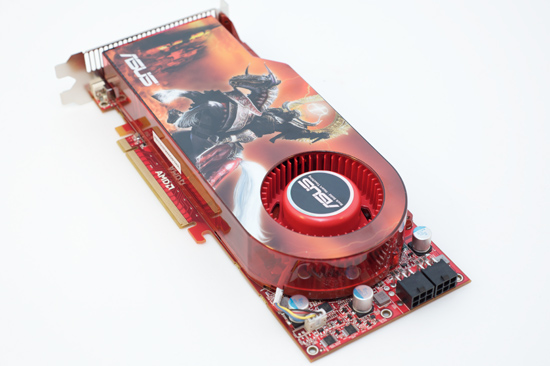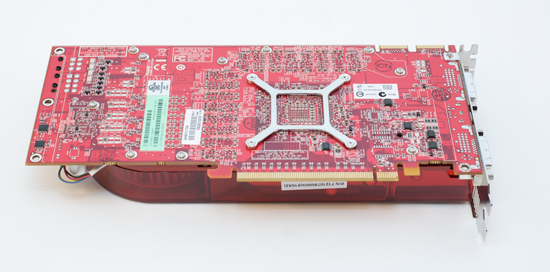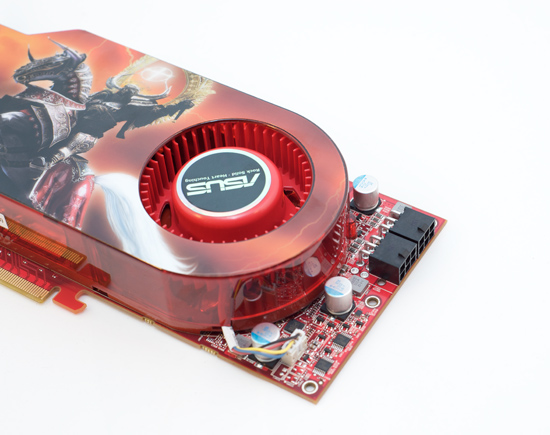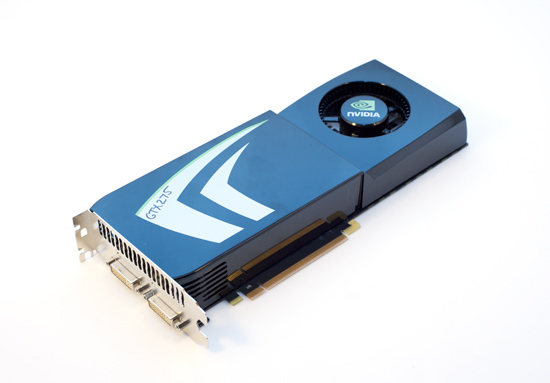ATI Radeon HD 4890 vs. NVIDIA GeForce GTX 275
by Anand Lal Shimpi & Derek Wilson on April 2, 2009 12:00 AM EST- Posted in
- GPUs
The Cards and The Test
In the AMD department, we received two cards. One was an overclocked part from HIS and the other was a stock clocked part from ASUS. Guess which one AMD sent us for the review. No, it's no problem, we're used to it. This is what happens when we get cards from NVIDIA all the time. They argue and argue for the inclusion of overclocked numbers in GPU reviews when it's their GPU we're looking at. Of course when the tables are turned so are the opinions. We sincerely appreciate ASUS sending us this card and we used it for our tests in this article. The original intent of trying to get a hold of two cards was to run CrossFire numbers, but we only have one GTX 275 and we would prefer to wait until we can compare the two to get into that angle.



The ASUS card also includes a utility called Voltage Tweaker that allows gamers to increase some voltages on their hardware to help improve overclocking. We didn't have the chance to play with the feature ourselves, but more control is always a nice feature to have.

For the Radeon HD 4890 our hardware specs are pretty simple. Take a 4870 1GB and overclock it. Crank the core up 100 MHz to 850 MHz and the memory clock up 75 MHz to 975 MHz. That's the Radeon HD 4890 in a nutshell. However, to reach these clock levels, AMD revised the core by adding decoupling capacitors, new timing algorithms, and altered the ASIC power distribution for enhanced operation. These slight changes increased the transistor count from 956M to 959M. Otherwise, the core features/specifications (texture units, ROPs, z/stencil) remain the same as the HD4850/HD4870 series.
Most vendors will also be selling overclocked variants that run the core at 900 MHz. AMD would like to treat these overclocked parts like they are a separate entity altogether. But we will continue to treat these parts as enhancements of the stock version whether they come from NVIDIA or AMD. In our eyes, the difference between, say, an XFX GTX 275 and an XFX GTX 275 XXX is XFX's call; the latter is their part enhancing the stock version. We aren't going to look at the XFX 4890 and the XFX 4890 XXX any differently. In doing reviews of vendor's cards, we'll consider overclocked performance closely, but for a GPU launch, we will be focusing on the baseline version of the card.
On the NVIDIA side, we received a reference version of the GTX 275. It looks similar to the design of the other GT200 based hardware.

Under the hood here is the same setup as half of a GTX 295 but with higher clock speeds. That means that the GTX 275 has the memory amount and bandwidth of the GTX 260 (448-bit wide bus), but the shader count of the GTX 280 (240 SPs). On top of that, the GTX 275 posts clock speeds closer to the GTX 285 than the GTX 280. Core clock is up 31 MHz from a GTX 280 to 633 MHz, shader clock is up 108 MHz to 1404 MHz, and memory clock is also up 108 MHz to 2322. Which means that in shader limited cases we should see performance closer to the GTX 285 and in bandwicth limited cases we'll still be faster than the GTX 216 because of the clock speed boost across the board.
Rather than just an overclock of a pre-existing card, this is a blending of two configurations combined with an overclock from the two configurations from which it was born. And sure, it's also half a GTX 295, and that is convenient for NVIDIA. It's not just that it's different, it's that this setup should have a lot to offer especially in games that aren't bandwidth limited.
That wraps it up for the cards we're focusing on today. Here's our test system, which is the same as for our GTS 250 article except for the addition of a couple drivers.
The Test
| Test Setup | |
| CPU | Intel Core i7-965 3.2GHz |
| Motherboard | ASUS Rampage II Extreme X58 |
| Video Cards | ATI Radeon HD 4890 ATI Radeon HD 4870 1GB ATI Radeon HD 4870 512MB ATI Radeon HD 4850 NVIDIA GeForce GTX 285 NVIDIA GeForce GTX 280 NVIDIA GeForce GTX 275 NVIDIA GeForce GTX 260 core 216 |
| Video Drivers | Catalyst 8.12 hotfix, 9.4 Beta for HD 4890 ForceWare 185.65 |
| Hard Drive | Intel X25-M 80GB SSD |
| RAM | 6 x 1GB DDR3-1066 7-7-7-20 |
| Operating System | Windows Vista Ultimate 64-bit SP1 |
| PSU | PC Power & Cooling Turbo Cool 1200W |










294 Comments
View All Comments
Snarks - Tuesday, April 7, 2009 - link
One is an open, one is not.Jesus christ.
The fact you have to pay extra on top of the card prices to use these features is a no go. You start to lose value, thus negating the effect these "features" have.
p.s ATI have similar features to nvidia, what they have is nothing new.
SiliconDoc - Tuesday, April 7, 2009 - link
Did you see a charge for ambient occlusion ?Here you are "clucky clucky cluck cluck !"
Red rooster, the LIARS crew.
SiliconDoc - Tuesday, April 7, 2009 - link
One ? I count for or five. I never had to pay extra outside card cost for PhysX, did you ?You see, you people will just lie your yappers off.
Yeah ati has PhysX - it's own. ROFLMAO
Look, just jump around and cluck and flap the rooster wings and eat some chickseed, you all can believe eachothers LIES. Have a happy lie fest, dude.
bill3 - Thursday, April 2, 2009 - link
Personally while you bring up good points I'd much, much, MUCH rather have the thorough explanation of CUDA and PHYSX and the relevance thereof, they gave us than power, heat and overclocking numbers you can get at dozens of other reviews. The former is insight, the latter just legwork.joos2000 - Thursday, April 2, 2009 - link
I really like to soft shadows you get in the corners with the new AO features in nVidia's drivers. Very neat.dryloch - Thursday, April 2, 2009 - link
I had a 4850 that I bought at launch. I was very excited when ATI released their Video Convertor app. I spent days trying to make that produce watchable video. Then I realized that every website that tested it had the same result. They released a broken POS and have yet to fix it. I did not appreciate them treating me like that so when I replaced the card I switched out to Nvidia. I have gone back and forth but this time I think I will stick with Nvidia for a while.duploxxx - Thursday, April 2, 2009 - link
and by buying Nvidia you already knew that you didn't have POS so in the end you have the same result, except for the fact that the 48xx series really had a true performance advantage with that price range so your rebranded replacement just gave you 1) additional cost and 2) really 0 added value, so your grass is a bit to green.....Exar3342 - Thursday, April 2, 2009 - link
"0 added value"? Really? He didn't have a GPU video converter that worked on his ATI card, and now he DOES have a working program with his Nvidia card. Sounds like added value to me. He gets the same performance, pretty much the same price, and working software. Not a bad deal...z3R0C00L - Thursday, April 2, 2009 - link
The GPU converted that comes with nVIDIA is horrible (better than ATi's though).I use Cyberlink PowerDirector 7 Ultra which supports both CUDA and Stream. Worth mentioning that Stream is faster.
Spoelie - Thursday, April 2, 2009 - link
Is the 30$ pricetag of badaboom included in the "pretty much the same price"? If it isn't, then actually there is no added value. You have a converter (value, well only if your goal is to put video's on your ipod and it's worth 30$ to you to do it faster) but you have to pay for it extra. The only thing the nvidia card provides is the ability to accelerate that program, you don't actually get the program.